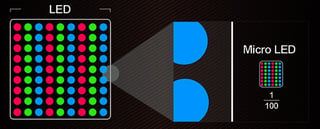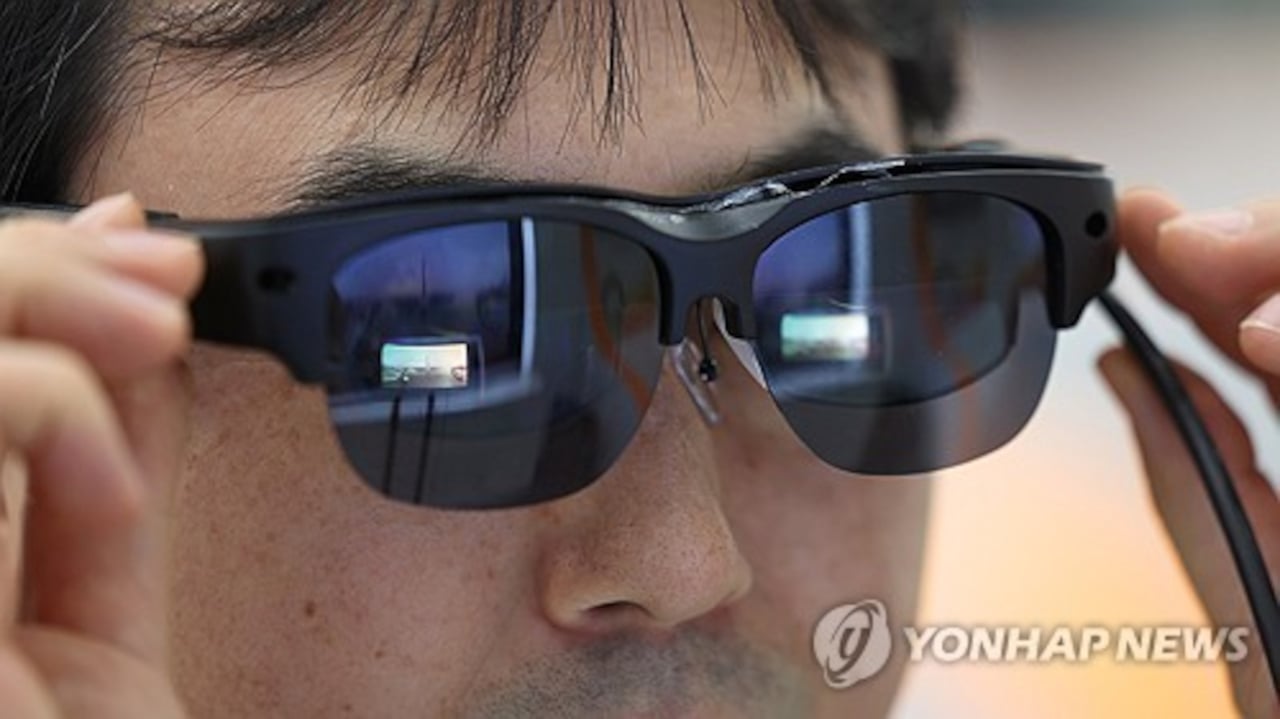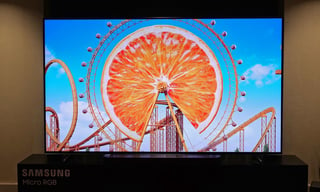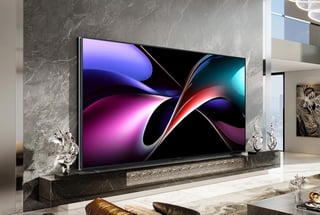microLED, also known as micro-LED, mLED or µLED is an emerging flat-panel display technology consisting of arrays of microscopic LEDs forming the individual pixel elements. The first high-resolution and video-capable InGaN microLED microdisplay in VGA format was realized in 2009 by Hongxing Jiang and Jingyu Lin and their colleagues at Texas Tech University and III-N Technology, Inc. via active driving of microLED array by a complementary metal-oxide semiconductor (CMOS) IC. Compared to widespread LCD technology, microLED displays offer better contrast, response times, and energy efficiency. MicroLED offers greatly reduced energy requirements when compared to conventional LCD displays while also offering pixel-level light control and a high contrast ratio. The inorganic nature of microLEDs gives them a longer lifetime advantage over OLEDs and allows them to display brighter images with minimal risk of screen burn-in. The sub-nanosecond response time of µLED has a huge advantage over other display technologies for 3D/AR/VR displays since these devices need more images, more pixels per image, more frames per second and fast response. As of 2021[update], microLED displays have not been mass-produced, although Sony, Samsung, and Konka sell microLED video walls. LG, Tianma, PlayNitride, TCL/CSoT, Jasper Display, Jade Bird Display, Plessey Semiconductors Ltd, and Ostendo Technologies, Inc. have demonstrated prototypes. Sony already sells microLED displays as a replacement for conventional cinema screens. BOE, Epistar, and Leyard have plans for microLED mass production. MicroLED can be made flexible and transparent, just like OLEDs. From Wikipedia






